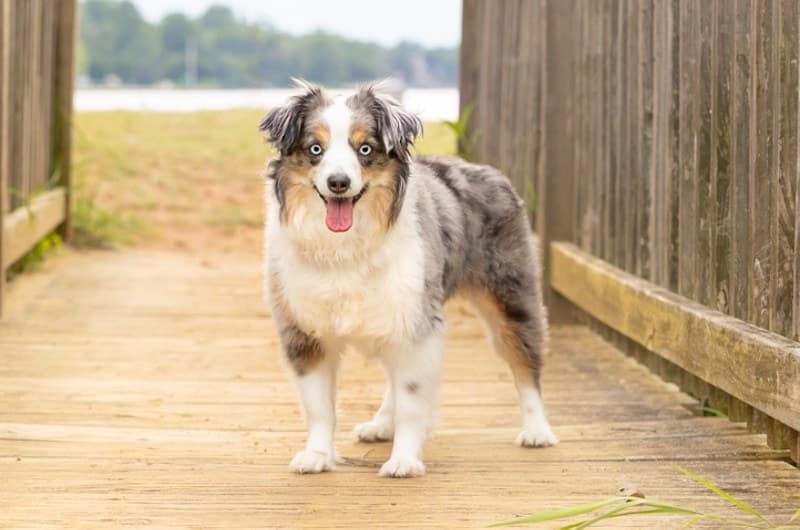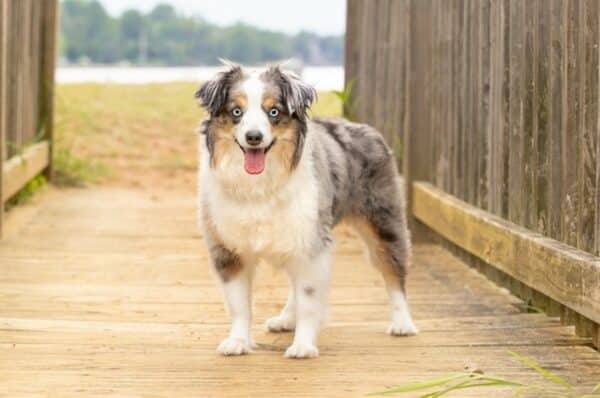Click to Skip Ahead
You’ve likely heard of the Australian Shepherd, but did you know that there was a miniature version? They are small to medium in size and have their origins in the United States. They are nearly exactly like the Aussie, just in a more diminutive form. If you’d like to learn more about these energetic yet small bundles of fur, keep reading!
Breed Overview
Height:
13 – 18 inches
Weight:
20 – 40 pounds
Lifespan:
12 – 13 years
Colors:
Black, blue merle, red, red merle
Suitable for:
Active families or singles, houses with a yard, apartments
Temperament:
Loyal, good-natured, intelligent, energetic, playful, affectionate
The Miniature Australian Shepherd is essentially a small version of the Australian Shepherd. The coat is medium length and comes in the same colors as the Aussie: black, blue merle, red, and red merle.
These dogs are small but mighty! They are super energetic, need plenty of exercise, and are known to be friendly and affectionate.
Miniature Australian Shepherd Characteristics

The Earliest Records of Miniature Australian Shepherds in History
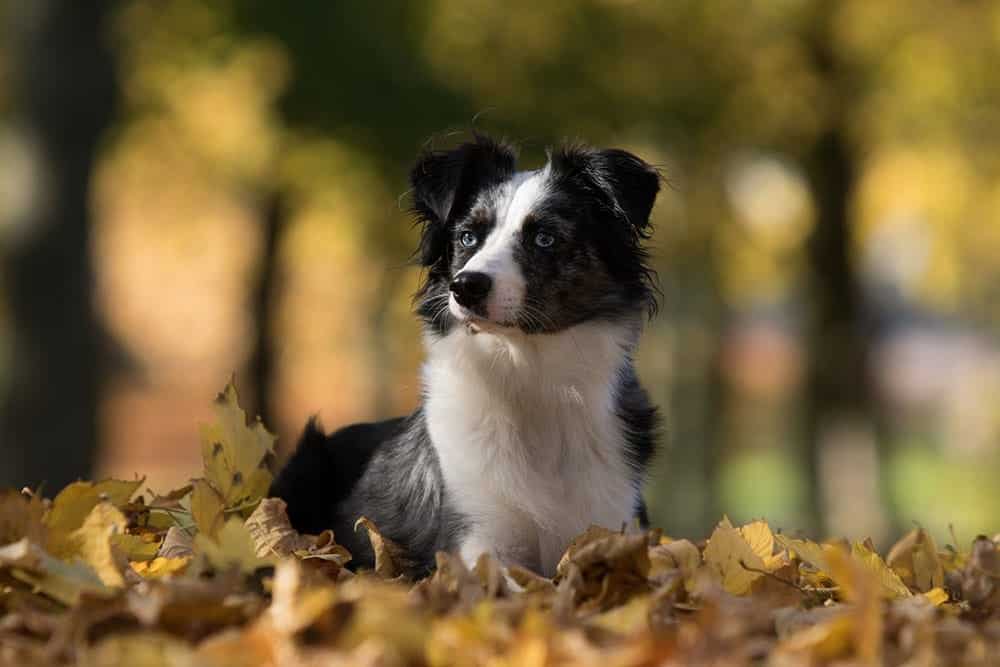
Since the Miniature Australian Shepherd’s background is intertwined with that of the Australian Shepherd, we’ll need to start with the Aussie. They don’t have origins in Australia, as you might imagine, but rather in Basque, a region between France and Spain.
The ancestor of the Australian Shepherd is thought to be the Pyrenean Shepherd, which was used for herding but also as a general working dog and excelled at both.
Some Basque shepherds immigrated to Australia in search of land for cattle ranching. It’s believed that the Basque’s herding dogs were crossed with Border Collies and other Australian/British breeds. These dogs eventually arrived in the U.S. by way of California and were named Australian Shepherds.
How Miniature Australian Shepherds Gained Popularity
During the late 1800s and early 1900s, the Australian Shepherd was much admired by Californian ranchers and was refined and essentially molded into the Aussie that we know today. So, technically, the Australian Shepherd is an American Shepherd.
After World War II and during the 1950s, Aussies trained by Jay Sisler made the rounds performing in front of audiences at rodeos. These dogs were even featured on “The Ed Sullivan Show” and “The Wonderful World of Disney”!
Small Australian Shepherds started showing up in the rodeo shows in the 1960s, which inspired breeders to continue breeding them. They had the same energy and herding skills as the larger Aussies but were more portable and capable of living in urban areas.
By the 1970s, there were enough of these mini Aussies to lead to them being called Miniature Australian Shepherds, to separate them from their bigger cousins.
Formal Recognition of Miniature Australian Shepherds
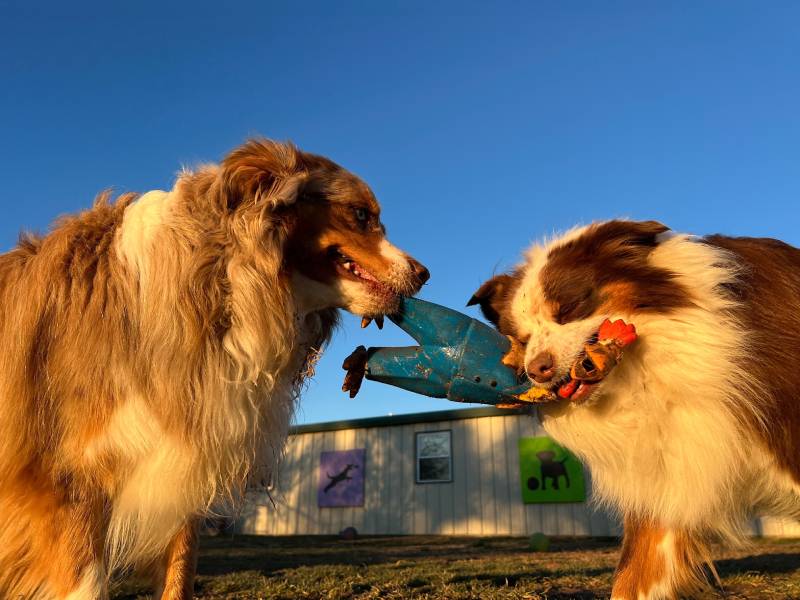
The Miniature Australian Shepherd might have gotten their origins in the 1960s, but it took a while before they were formally recognized. Their popularity took off when equestrians brought them along while traveling to horse shows.
Still, it wasn’t until 1990 that the Miniature American Shepherd Club of the U.S.A. was formed. The Mini Aussie began the recognition stage for the American Kennel Club (AKC) in 2012 and got full recognition in 2015.
The Miniature Australian Shepherd first appeared on AKC’s most popular breed list the following year in 2016 and was number 34 just 2 years later in 2018. As of early 2024, Mini Aussies are the 31st most popular, but their larger cousins are the 12th. The Minis just need more time!

Top 5 Unique Facts About Miniature Australian Shepherds
1. One or two breeds?
The Miniature Australian Shepherd is also known as the Miniature American Shepherd. In fact, the AKC has them listed as American, but they are the same breed.
2. They have more names
This breed has a few names: Mini Aussies, Miniature American Shepherds, and sometimes, MAS as an abbreviation of either full name.
3. Breeders were not happy about Mini Aussies
Australian Shepherd breeders weren’t thrilled when Mini Aussies were being developed. They couldn’t understand why there had to be a dog that was exactly the same, just smaller. It was believed that this would negatively impact the development of the standard Australian Shepherd. The Mini Aussie breeders used the Dachshund to highlight that you can successfully have different-sized breeds simultaneously.
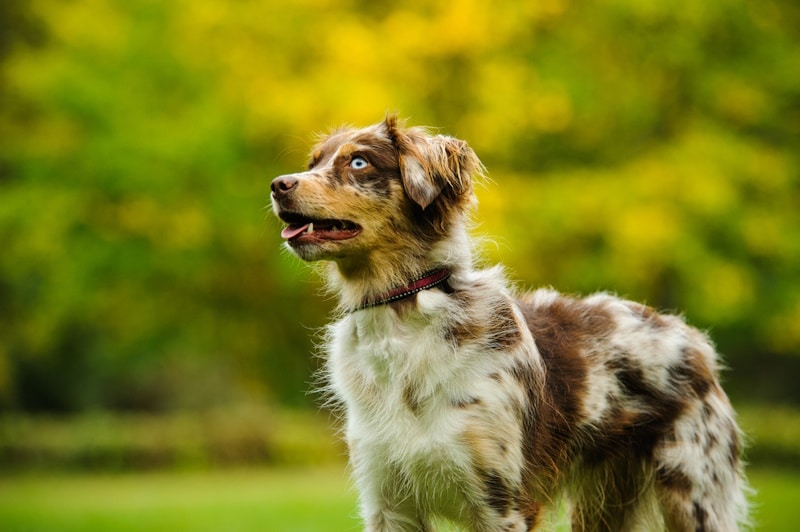
4. Heterochromia is common
Just like Australian Shepherds, Mini Aussies can be odd-eyed. This means they can have one blue and one brown eye.
5. Docked tails are also common
Miniature Australian Shepherds are born with short, bobbed tails, or they can have their tails docked. The latter is typically done for a good reason: Since they are working dogs, docked tails are for their own safety.

Does the Miniature Australian Shepherd Make a Good Pet?
Miniature Australian Shepherds make excellent pets! Since they are small, they can live in more confined spaces, but they still need to get the proper amount of exercise. These dogs need owners who are active and able to take them out for long walks and to run full-out every day. Since Mini Aussies are incredibly energetic, they will become destructive if their exercise needs aren’t met.
They are wonderful with children—in fact, these social and friendly dogs also get along with other animals and everyone else they meet.
They are easy to train because they are intelligent and eager to please. But bear in mind that Mini Aussies need someone home most of the time. Since they are such social dogs, they are prone to separation anxiety.

Conclusion
The Miniature Australian Shepherd (otherwise known as the Miniature American Shepherd) is everything that you love about the Australian Shepherd but in a smaller package.
These dogs make wonderful family pets and are easy to train. Just make sure you will be able to keep up with their vast amounts of energy!
They are truly lovely in every sense of the word: They’re beautiful with a beautiful temperament. They will definitely make great companions for the right families.
Featured Image Credit: Danielle W Press, Shutterstock

